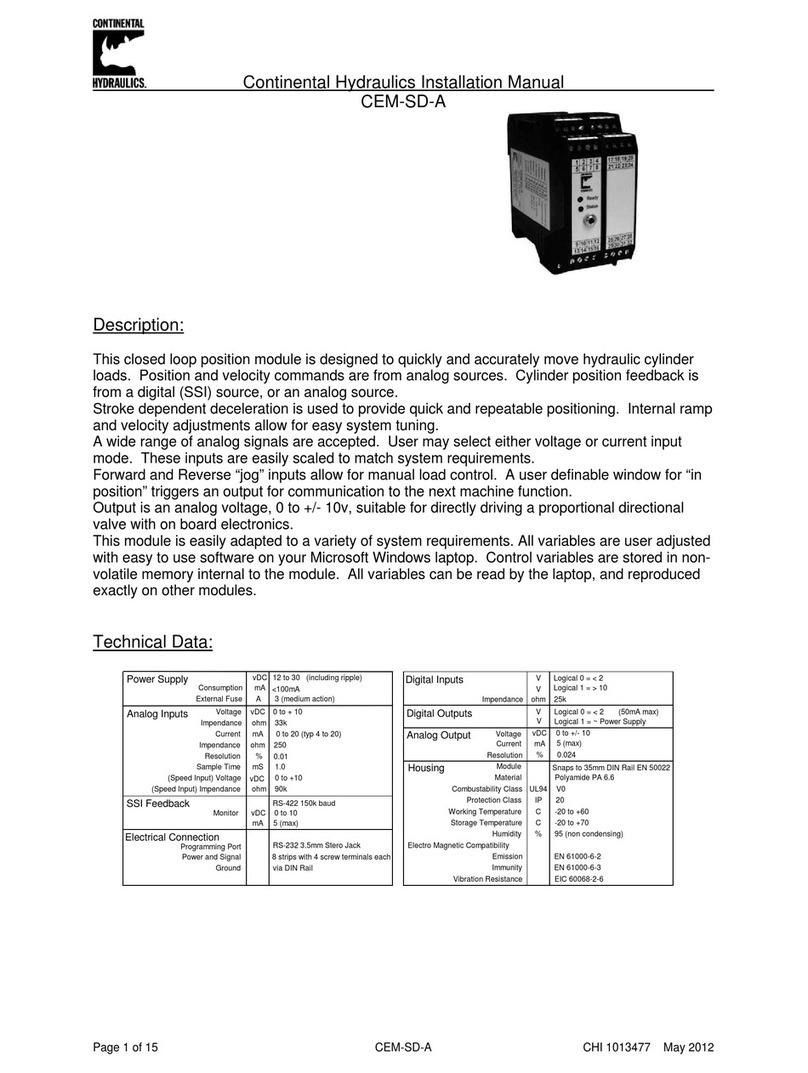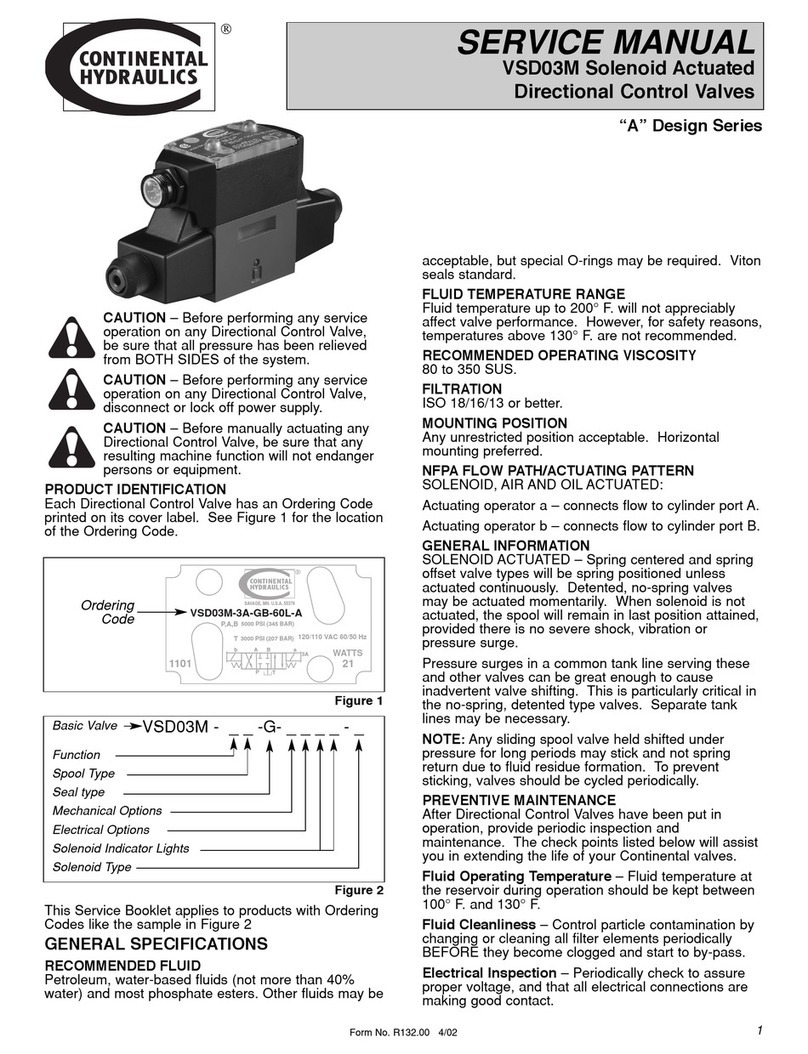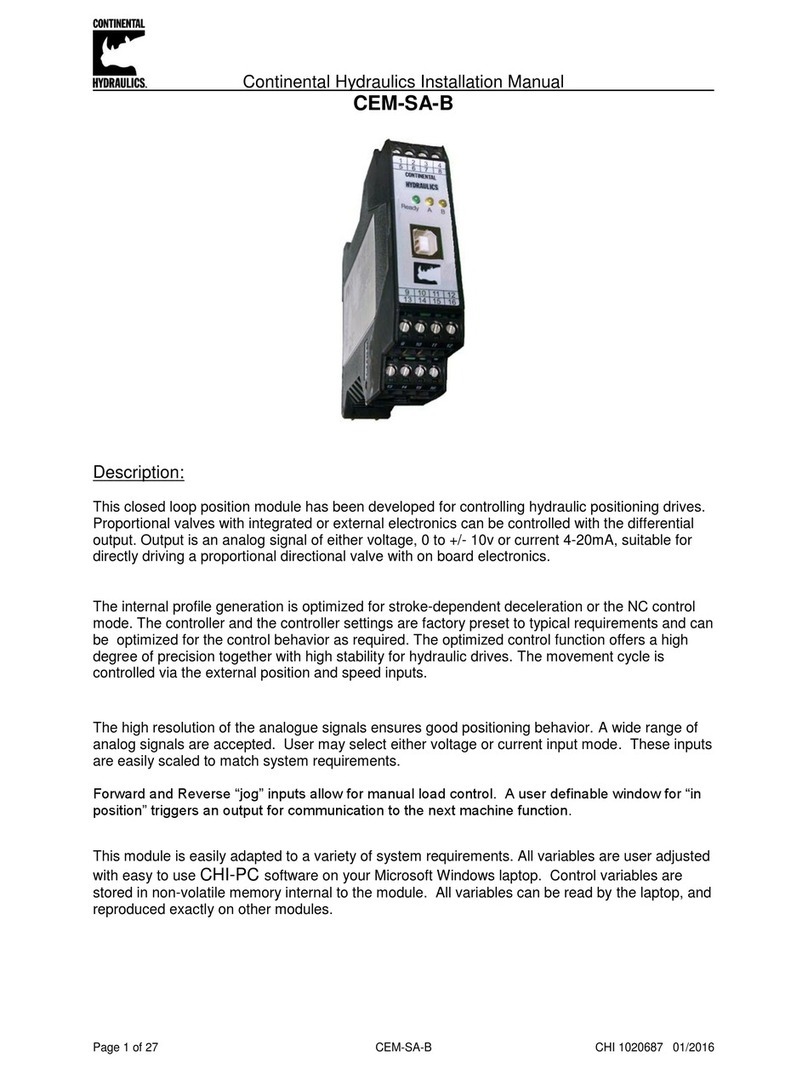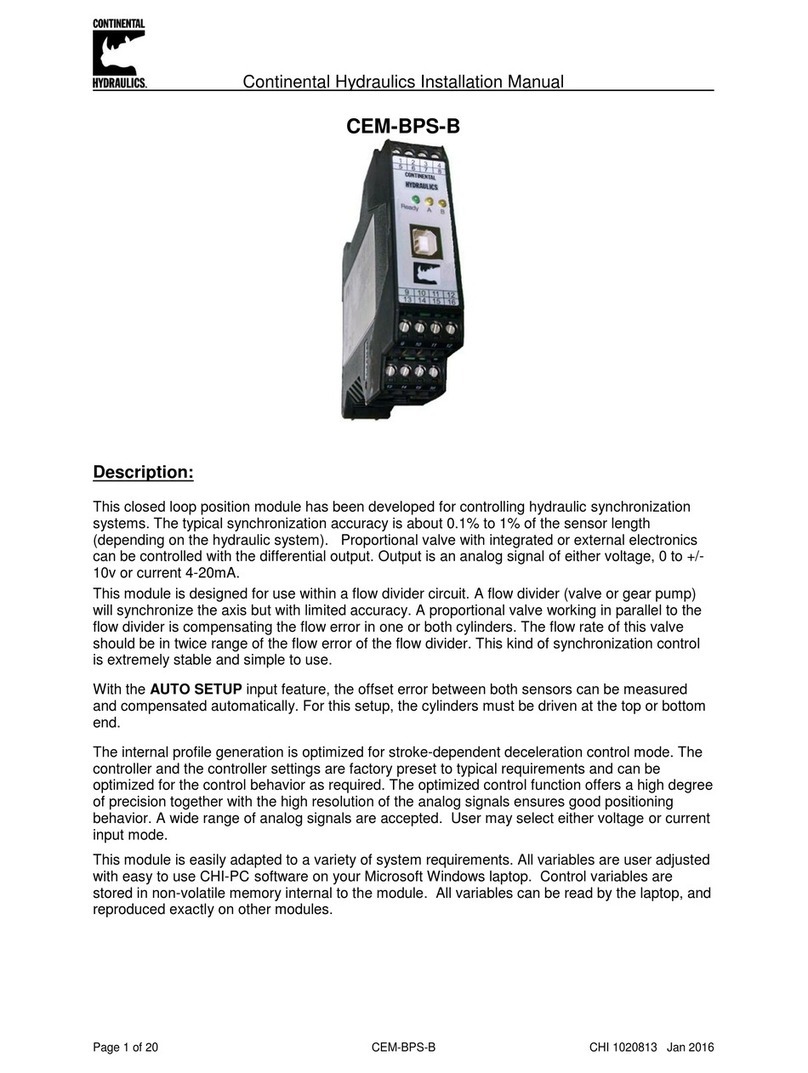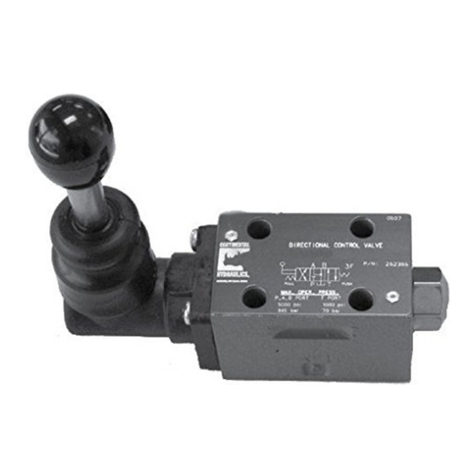
Form No. 264587 8/03
2
Fluid Cleanliness – Control particle contamination
by changing or cleaning all filter elements
periodically BEFORE they become clogged and start
to by-pass.
Electrical Inspection – Periodically check to assure
proper voltage, and that all electrical connections are
making good contact.
After Extended Shutdowns – Some types of
hydraulic fluids become tacky after long periods of
non-use. Manually actuate valves several times
after extended shutdowns to assure that all
components move freely before powering up.
CAUTION – Before manually actuating any
Directional Control Valve, be sure that any
resulting machine function will not endanger
persons or equipment.
VSD08M VALVE REPAIR PROCEDURES
DISASSEMBLY and REASSEMBLY
GENERAL
Disassembly and reassembly of Directional Control
Valves is a delicate operation. Anyone attempting it
must assume responsibility for the operation of the
valve. Continental valves may be returned to the
factory or to an Authorized Repair Center for repair.
Contact your local Distributor or Continental
Hydraulics for details.
If interchanging spool types or making other
conversions, remark the escutcheon plate to show
the correct code. Include stops, spool, spring, and
detent orientation. See Figure 2 to serve as a guide
to correct numbering.
Disassembly in the field by other than an Authorized
Repair Center technician, whether for repair or
modification may void warranty.
Before disassembly, study the exploded view on
Page 3 and note the orientation and location of all
parts. Special care should be taken to avoid
damage to the spool and/or body bore. Even a
microscopic nick in a land on the spool or body may
ruin the valve.
All valves can be disassembled and reassembled in
a horizontal-mounted position, provided there is
adequate space and the work area is clean.
Place the spool in a bath of clean oil to coat it with a
protective film, and ease assembly. Inspect o-rings
for nicks, and make sure they are well oiled. It’s a
good idea to replace all seals whenever the valve is
disassembled.
Continental valves are precisely machined to
exacting tolerances. Do not force any parts, or
overtighten threaded fasteners.
PART AND ASSEMBLY IDENTIFICATION
The parts drawing and parts list on Page 3 may be
used to identify individual parts and assemblies in
directional control valves.
VSD08M PILOT AND DRAIN
Continental pilot operated valves are ordered from
the factory with either internal or external drains.
Converting the pilot or drain to either internal or
external mode may be done as follows:
When internal pilot and/or drain is used, the
corresponding “X” and “Y” ports in the subplate must
be plugged. The pilot pressure, whether internal or
external, must be at least 70 psi (5 bar) greater than
the pressure at the tank (“T”) line. It may be
desirable to use external pilot when system pressure
is subject to wide fluctuations. External drain must
be used when either an “open” center or “tandem’
center spool is used. External drain is also
recommended when using pilot chokes. Pilot
chokes do cause some pressure variations in the
tank line that will affect spool movement if internal
drain is used.
MAXIMUM A, B, P Ports 5000 psi 345 bar
OPERATING T, & Y Ports 3000 psi 207 bar
PRESSURES
MINIMUM OIL PILOT PRESSURE 70 psi 4.8 bar
MAXIMUM CYCLE RATE up to 300 cpm
NFPA MOUNTING SURFACE ANSI/B93.7-1986 - D08
ISO 4401 - SIZE 08
WEIGHT Single Actuator 33 lbs. 15 kg
Double Actuator 34 lbs. 15.4 kg
PERFORMANCE SPECIFICATIONS
SECTION A-A
SECTION B-B
CODE LOCATION PILOT DRAIN
ABC
1INTERNAL PILOT RBB
EXTERNAL DRAIN
2EXTERNAL PILOT BRB
EXTERNAL DRAIN
3INTERNAL PILOT RBO
INTERNAL DRAIN
4EXTERNAL PILOT BRO
INTERNAL DRAIN
B = Blocked 1/16 NPT Pipe Plug (Item #30)
R = Restricted 1/16 NPT Pipe Plug with 0.070 Orifice (Item #33)
O = Open No Plug
